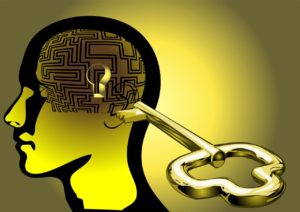People have short attention spans especially when they are constantly bombarded with or asked to read scripts. That is one of the reasons why the opening sequence to your story whether it be serialized storytelling or a film is so important.
The mind is a story-making machine thanks to the hardware of the brain. Studies have confirmed there is a human need or tendency to make characters and narratives out of what we see in the world around us. So our appetite for story is not the problem. It’s not understanding how the mind on story works. That is why story structure is so important.
The first 10 pages is the basic set-up and should identify the main protagonist, the inciting incident, the goal and the conflict that will unfold in the story.
From the standpoint of psychology, Aristotle had it right when writing about drama in Poetics. He said you want to tell a story that evokes emotions. The first emotion is pity which is what gets us to empathize with the character. The second one is fear which keeps us engaged.
Pity is what starts to create the narrative transport, a term coined by Melanie Greene that causes us to connect wit the protagonist. Once you have transport, stories can be likened to a mental simulation that the reader or viewer experiences. What that means is it’s as if we are transported into the shoes of the protagonist and we start to experience the events as if they are happening to us. Experiments undertaken by Nicole Speer have also shown when the reader is engaged in the story that activation in the brains of the reader mirror actions the protagonist takes. Keith Oatley has also advanced the theory of how reading fiction can be likened to a mental simulation that is run on the mind.
Telling stories is the most ancient and widespread way of communicating and making meaning from experience. Fiction and even more films if they engage, told in a way that Aristotle calls “an imitation of action… the structural union of the parts being such that if any one of them is displace or removed, the whole will be disjointed and disturbed.” In other words it has to feel real and make sense.
The other physiological thing that goes on is when we are engaged with a story was discovered by Paul Zak. His research showed that the neurochemical oxytocin is produced when people are engaged in the story. This would result from having engendered the emotion of pity or empathy as oxytocin is the hormone or neuropeptide that is released during and after childbirth. It plays a critical role in social bonding. Once you have that you bring on the conflict which stimulates the cortisol a hormone produced by the adrenal gland. This is the hormone that gets ratcheted up when we experience stress… the conflict of the story is felt to be real as if we are in danger and that’s why we stay riveted to the story.
Neuroscience also explains how stories told in a certain way engage the imagination.
The parts of the brain that is literally wired to understand and resonate with story.This is a term coined by Marcus Raichle a neurologist at Washington School of Medicine who identified the parts of the brain that are active when the attention is directed inward in what is called a resting state. This is contrasted to the parts of the brain that comprise the task positive network (TPN) which is engaged during attention demanding activities. It is analogous to the protagonist in a story, goal-seeking or task related behavior.
When we are not engaged in a ‘task’ the DMN activates by ‘default.’ This network is the seat of what is called self-referential thinking, your memories, personality, but also what we is called theory of mind (TM)- thinking about the thoughts of others and the ability to attribute mental states including intention and desires, not only about yourself, but most importantly to others that are both different and similar to our own.
Not surprisingly it is the DMN that is also active when we are daydreaming, fantasizing but also when we are engaged in a story. This is one of the reasons why it is important to keep the grab and keep the attention on the story you are telling as as this network of the brain is also active when a person is unfocused and the mind wanders.
So if you want to hook your reader and get your story read pay attention to the first 10 pages which translates to the first 10 minutes.
Readers want to be hooked but you will need a powerful beginning to knock them out of apathy and into empathy. It makes all the difference in your story getting read and engaging the audience in the story.


 Creative Writing: Why We Write Stories
Creative Writing: Why We Write Stories